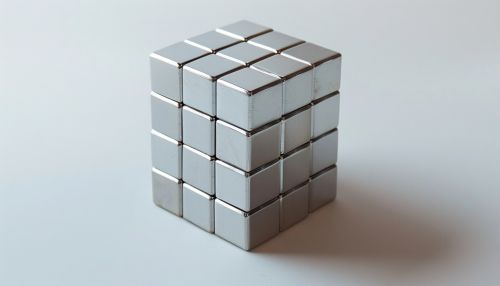Cube (Mathematics)
Introduction
In the realm of geometry, a cube is a three-dimensional solid object bounded by six square faces, facets or sides, with three meeting at each vertex. The cube is the only regular hexahedron and is one of the five Platonic Solids. It has 6 faces, 12 edges, and 8 vertices.


Mathematical Properties
The cube is a special kind of square prism, of rectangular prism, and of truncated square pyramid, and it is dual to the octahedron. It is a regular square prism in three orientations, and a trigonal trapezohedron in four orientations.
Geometry
Every cube has six equal faces. Each face is a square. The cube has six faces, 12 edges, and eight vertices. The length of the edges, or sides, of a cube is denoted by "a".
The main diagonal of a cube is the one that cuts through the centre of the cube; the diagonal of a face of the cube is not the main diagonal. The length of the main diagonal is given by the formula √3 * a, where √3 is approximately equal to 1.73205.
Volume and Surface Area
The volume of a cube is found by multiplying the length of any edge by itself twice. So if the length of an edge is a, then the volume is a * a * a = a^3.
The surface area of a cube is found by multiplying the length of an edge by itself, then multiplying by six. So if the length of an edge is a, then the surface area is 6 * a * a = 6a^2.
In Other Disciplines
Cubes have a rich history and significance in many areas of study.
Art
In art, cubes can be seen in the style of cubism, a 20th-century avant-garde art movement pioneered by Pablo Picasso and Georges Braque.
Science
In science, cubes can be observed in the formation of certain types of crystalline structures. They also feature prominently in the study of molecular geometry.
Philosophy
In philosophy, the cube is a prominent symbol in the works of Plato, particularly in his dialogue, the Timaeus, where it is associated with the element of earth.
